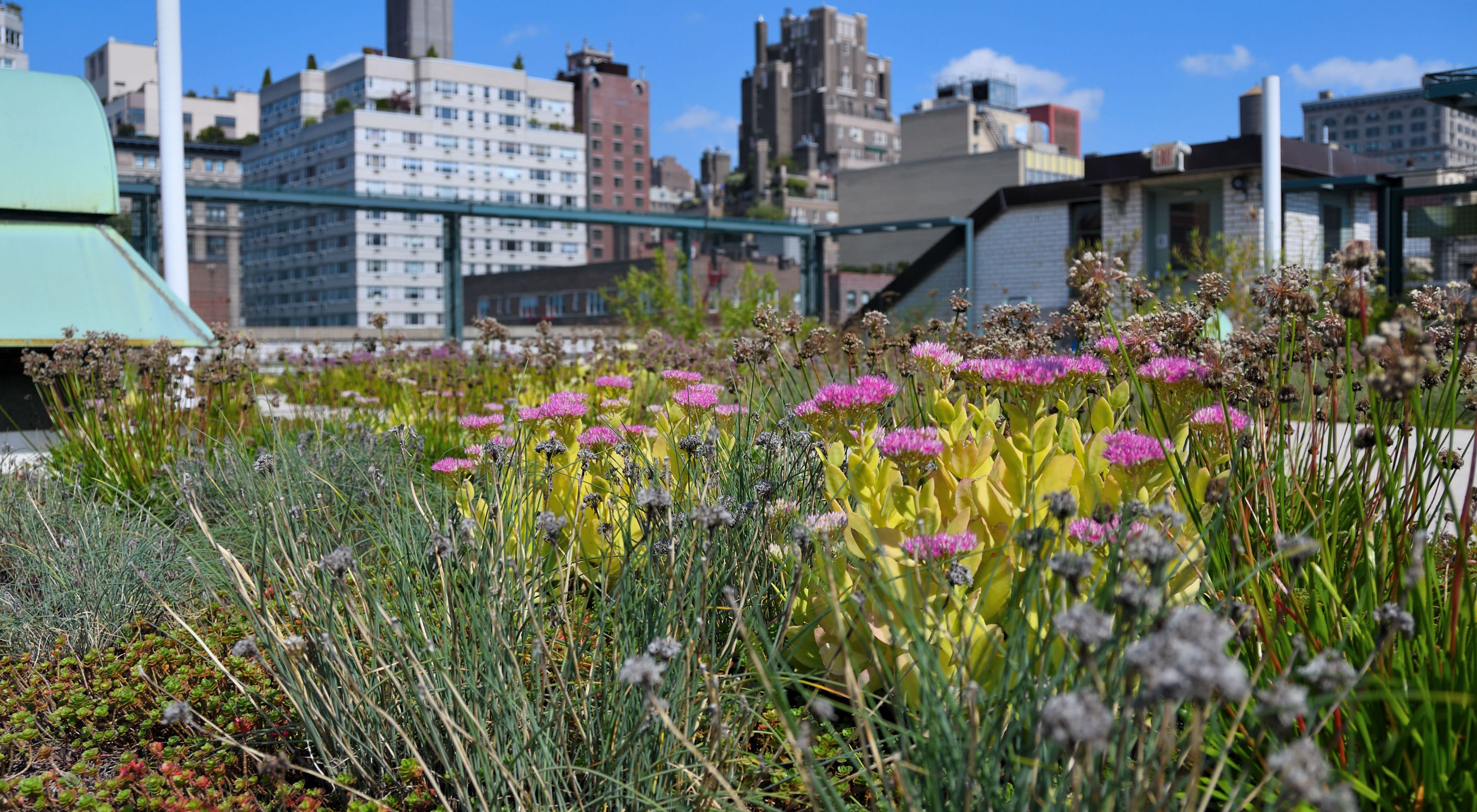In honor of our partnership, Backcountry has highlighted some of TNC's initiatives happening in our own backyards. From the New York City skyline to The Great Salt Lake shorline, conservation happens everywhere - and often a lot closer to home than you might think.
Article originally appeared on Backcountry.com and authored by George Tyson.
Up On The Roofs – New York City
Hidden from the crowded city streets and far removed from the flow of non-stop traffic below, there’s a little-utilized space above New York’s buildings that’s helping to make life better for its inhabitants.
‘Green roofs’, or living roofs, are rooftop spaces that are partially or completely covered with vegetation, and play a crucial role in helping cities adapt to a changing climate. According to a report by The Nature Conservancy published in 2016, the benefits of green roofs include improved air quality, increased insulation, and greater energy efficiency of buildings reducing greenhouse gas emissions. But in New York, just 736 of the estimated 1 million roofs are currently ‘greened’.
“Put another way,” explains the report, “out of the 40,000 acres of existing roof space, only 0.15% is green.” Using the report’s findings, The Nature Conservancy and their partners are now advocating for more beneficial uses of rooftops to make the city more livable, and to combat climate change.
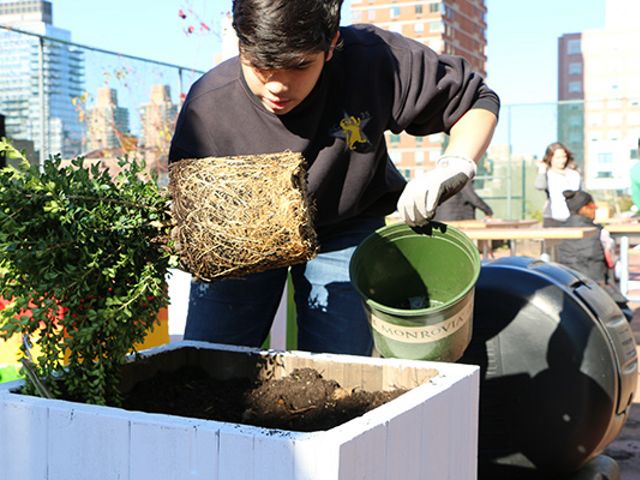
Wings And Water – Salt Lake City
The Wasatch Front, an urban area of Utah that hugs the Wasatch Range, is home to almost 80% of the state’s inhabitants. And right next door, the Western Hemisphere’s largest salt water lake—the Great Salt Lake—provides a habitat for millions of native birds, waterfowl and brine shrimp.
Since 2006, the Wings and Water project has been connecting young people from communities in the Wasatch Front to this vital resource, with the aim of inspiring the next generation of conservationists. In the 13 years it has been running, it has introduced more than 20,000 4th graders to the Great Salt Lake’s unique ecosystem.
“By connecting people with nature found in Salt Lake City’s backyard and helping them understand how this wetland habitat is important not only for nature, but for human communities too, we can build a stronger conservation ethic and understanding of our natural world” explains The Nature Conservancy.
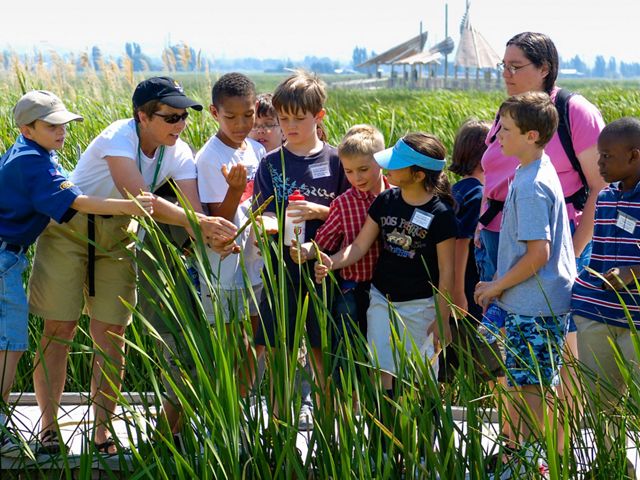
An Urban Hideaway – New York City
Next time you land at New York’s JFK Airport, take a look out of the window: the large stretch of wetland you see is the Jamaica Bay Wildlife Refuge—and it’s the only national recreation area you can reach by subway.
Jamaica Bay Wildlife Refuge was first established in 1953, and soon became an important natural haven for migrating birds and New Yorkers alike, completely contained within the city limits. But in 2012, Hurricane Sandy flooded the area, creating salty, wet conditions that many of the trees and shrubs vital to the wildlife’s habitats could not tolerate.
“Many native plants died, making way for invasive vines to spread throughout the area,” explains The Nature Conservancy. “These vines crowded the understory and suppressed the regeneration of native trees, which were crowded out by the thick carpet of vines.” So, in 2014, The Nature Conservancy worked alongside the National Park Service and local residents to restore the damaged areas and improve the refuge’s ecological health and resilience.
“Close to 1,000 volunteers—from school children to senior citizens—joined in the restoration effort, planting more than 25,000 trees and shrubs. The project restored 14 acres, strengthening the entire ecosystem at the site. Now, there are more resilient maritime forests which can better tolerate saltwater inundation and provide improved habitat for birds and pollinating insects.”
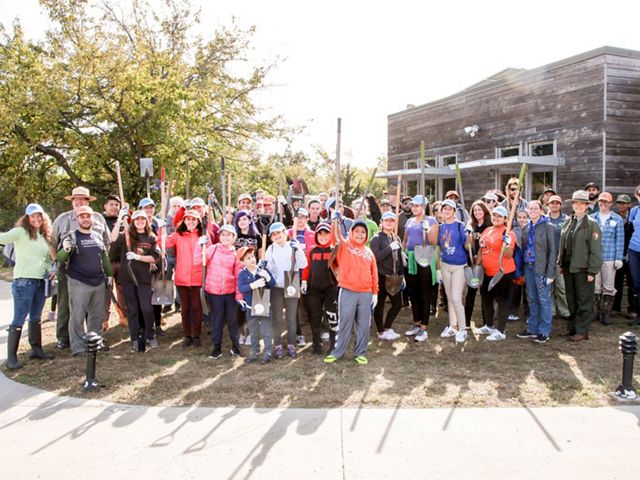
Sustainable Shorelines – Seattle
For countless coastal communities in Washington, shellfish farming is their lifeblood, and has been for generations. It’s no surprise then, that when looking for experts to collaborate with on a project to better understand how shellfish farms interact with the environment, TNC turned to the shellfish growers of Washington.
Shellfish growers spend a lot of time on and around the water, and know the intricacies of the environments they work in better than anyone. Thanks to this experience, they can assist in helping scientists understand the ecological role that shellfish play in healthy coastal habitats—and help plan for the effects of a changing climate. In partnership with Washington Sea Grant and the National Oceanic and Atmospheric Administration, they have also helped deploy cameras to monitor the environment, passing footage back to scientists so they can study animal interaction with the shellfish growing structures.
“We consider it essential to understand more about how different types of aquaculture interact with the environment to encourage smart growth of the industry,” says TNC. “As we begin efforts in restorative aquaculture and smart siting, science and technology are our springboards—and our work in Washington is a key first step.”
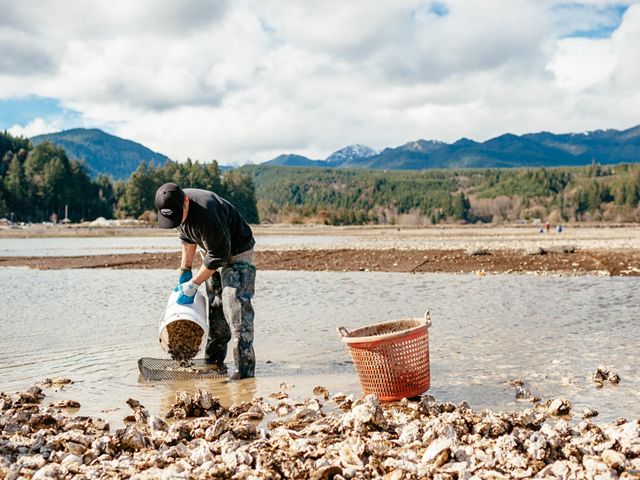
The Nature Conservancy + Backcountry
For more than 10 years, The Nature Conservancy and Backcountry have partnered together for the environment.
